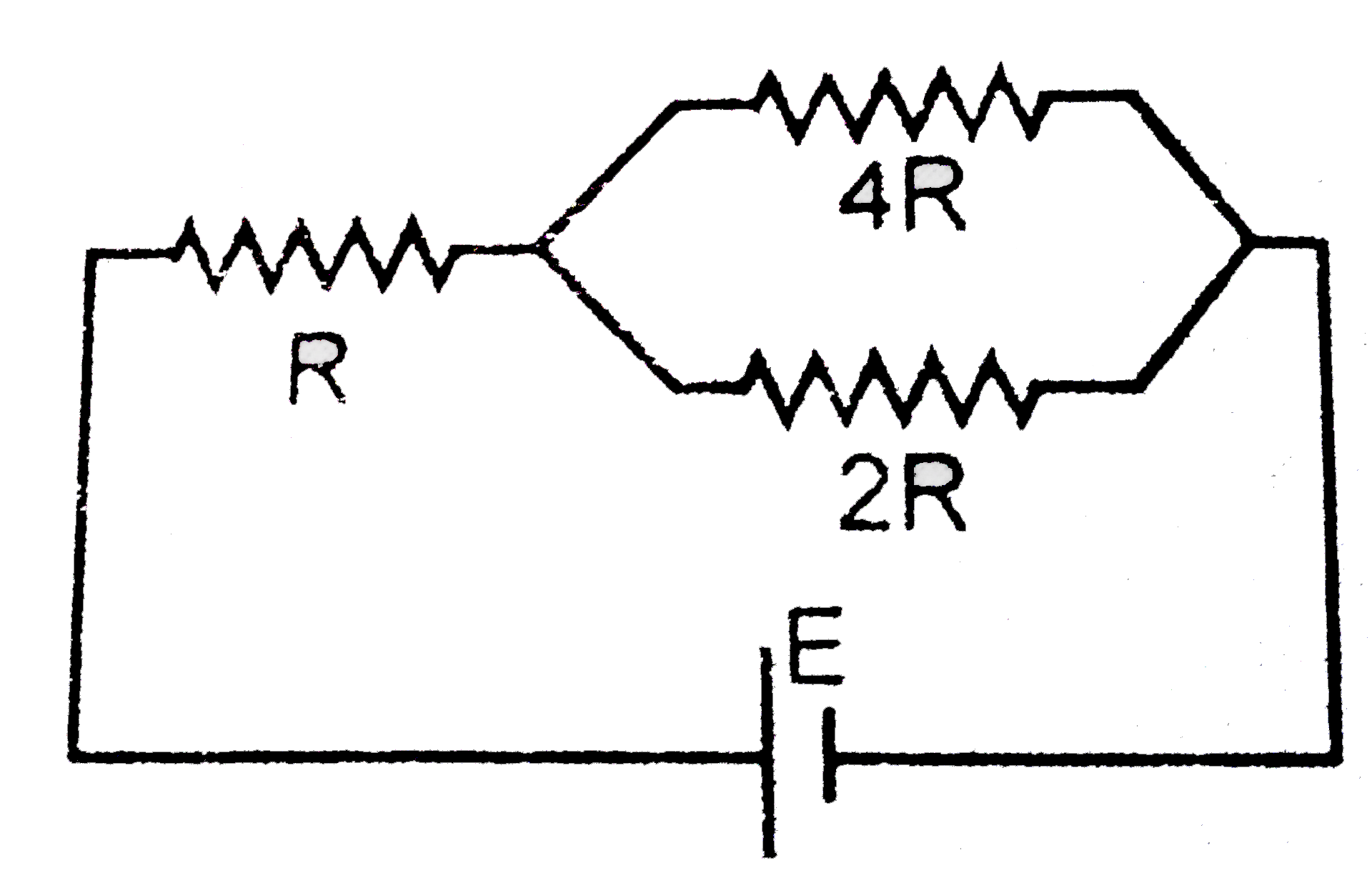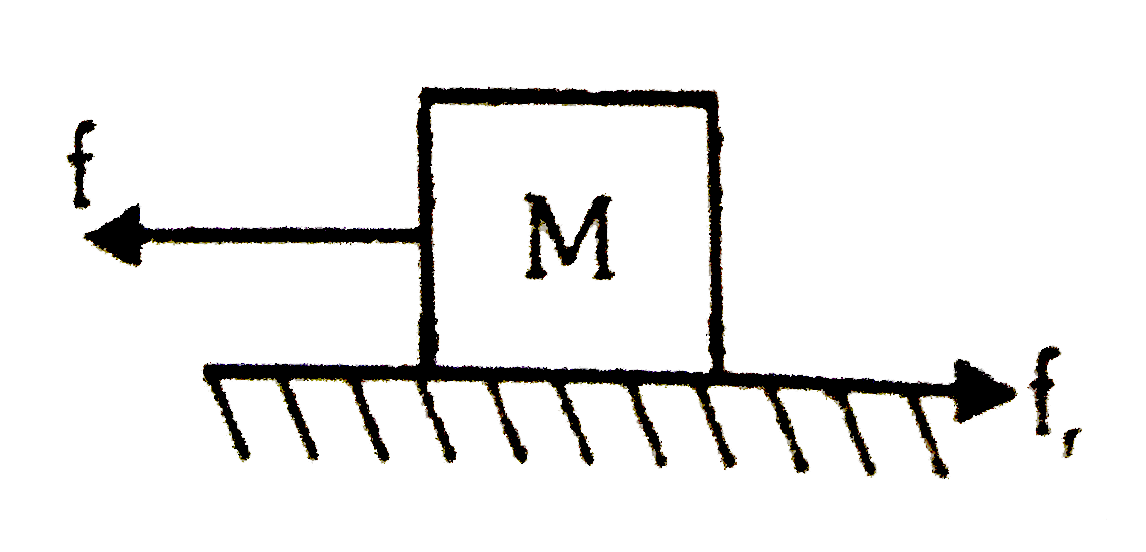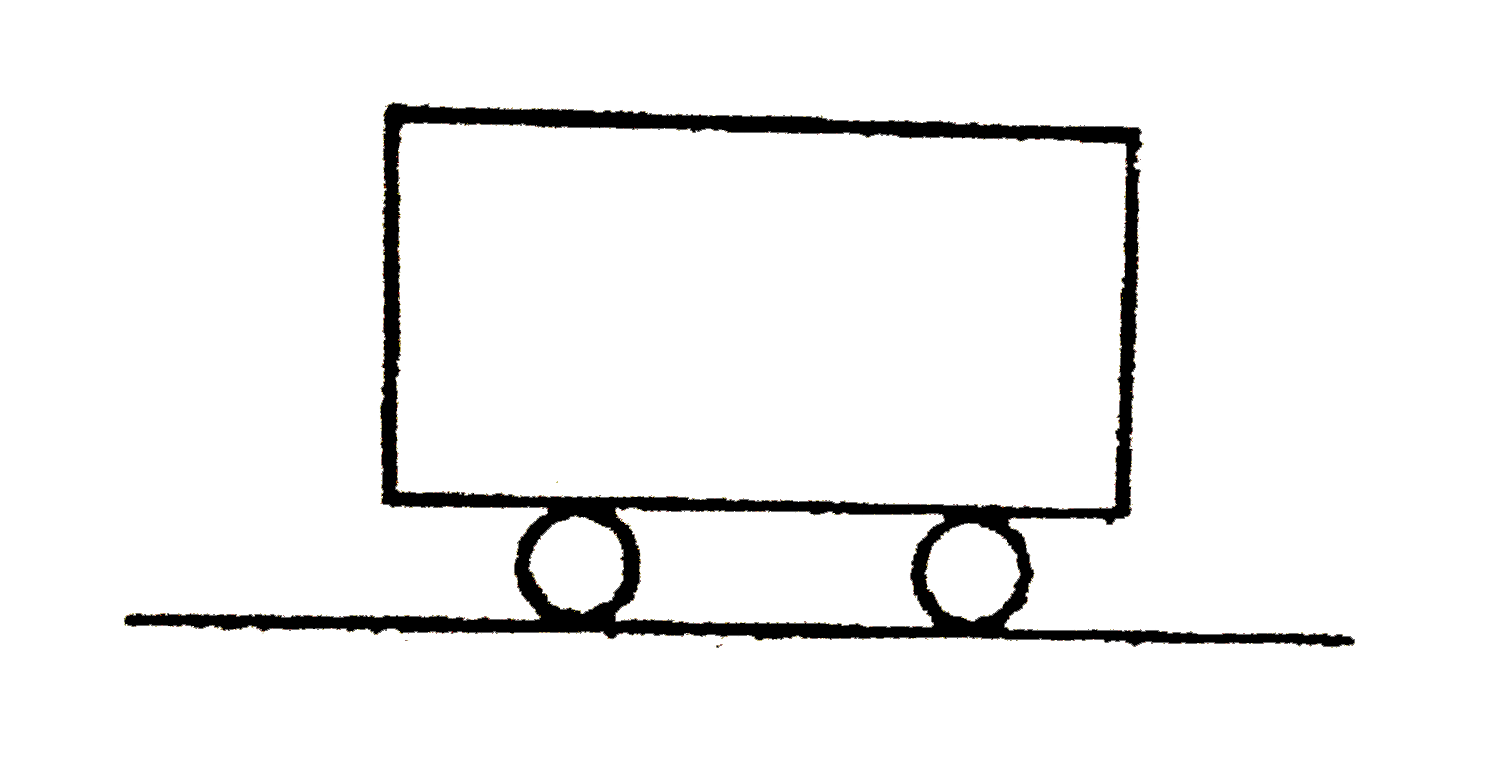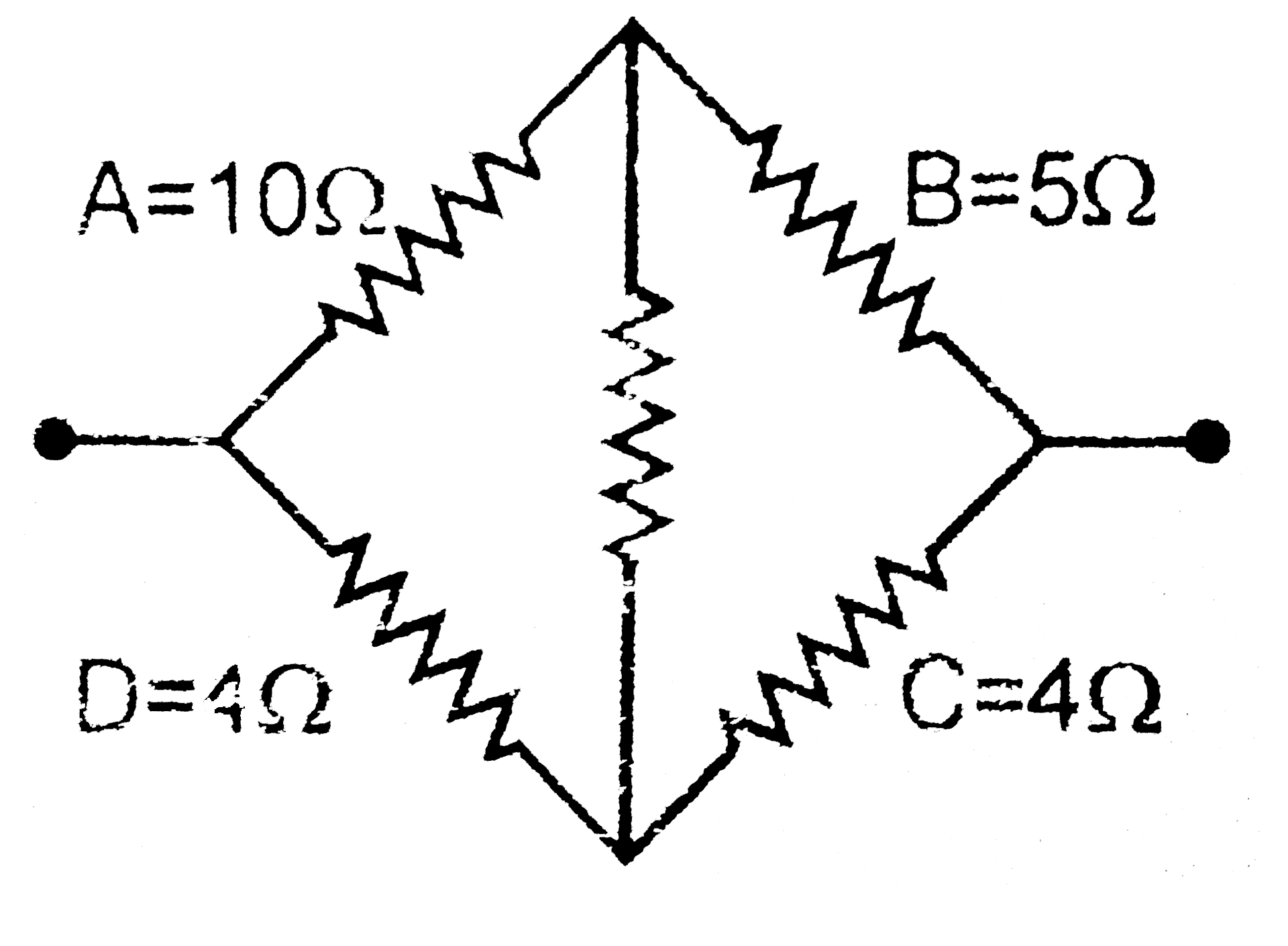Comprehension # 4
When the mass of a sytem is variable, a thrust force has to be applied on it in addition to all other forces acting on it. This thrust force is given by : →F=→vr(±dmdt)

Here →vr is the relative velocity with shich the mass dm either or leaves the system. A car has total mass 50kg. Gases are ejected from this backwards with relative velocity 20m/s. The rate of ejection of gas is 2kg/s. Total mass of gas is 20kg. Coefficient of friction between the car and road is μ=0.1.
Car will start moving after time t= ......... second :-
4
10
5
8
The correct Answer is:C

f=vdmdt=2(20)=40⇒fr=μmg
m=40=M0−2(t)⇒t=5sec
so (0.1)(50−2t)=40⇒t=5sec
Topper's Solved these Questions
- CENTRE OF MASSBOOK - ALLEN CHAPTER - CENTRE OF MASSEXERCISE - EXERCISE-IV A
32 Videos
- CENTRE OF MASSBOOK - ALLEN CHAPTER - CENTRE OF MASSEXERCISE - EXERCISE-IV B
14 Videos
- CENTRE OF MASSBOOK - ALLEN CHAPTER - CENTRE OF MASSEXERCISE - EXERCISE-II
43 Videos
- BASIC MATHEMATICS USED IN PHYSICS &VECTORS BOOK - ALLEN CHAPTER - BASIC MATHEMATICS USED IN PHYSICS &VECTORS EXERCISE - EXERCISE-IV ASSERTION & REASON
11 Videos
- ELASTICITY, SURFACE TENSION AND FLUID MECHANICSBOOK - ALLEN CHAPTER - ELASTICITY, SURFACE TENSION AND FLUID MECHANICSEXERCISE - Exercise 5 B (Integer Type Questions)
3 Videos
Similar Questions
Comprehension # 4
When the mass of a system is variable, a thrust force has to be applied on it in addition to all other forces acting on it. This thrust force is given by : →F=→vr(±dmdt). Here →vr is the relative velocity with which the mass dm either enters or leaves the system.

A car has total mass 50kg. Gases are ejected from its backwards with relative velocity 20m/s. The rate of ejection of gas is 2kg/s. Total mass of gas is 20kg. Coefficient of friction between the car and road is μ=0.1.
Car will start moving after time t=.........s.
View SolutionComprehension # 4
When the mass of a system is variable, a thrust force has to be applied on it in addition to all other forces acting on it. This thrust force is given by : →F=→vr(±dmdt). Here →vr is the relative velocity with which the mass dm either enters or leaves the system.

A car has total mass 50kg. Gases are ejected from its backwards with relative velocity 20m/s. The rate of ejection of gas is 2kg/s. Total mass of gas is 20kg. Coefficient of friction between the car and road is μ=0.1.
Maximum speed of car will be v=.......m/s :- (Take ln(43)=0.28 )
View Solution
Knowledge Check
Comprehension # 4
When the mass of a sytem is variable, a thrust force has to be applied on it in addition to all other forces acting on it. This thrust force is given by : →F=→vr(±dmdt)

Here →vr is the relative velocity with shich the mass dm either or leaves the system. A car has total mass 50kg. Gases are ejected from this backwards with relative velocity 20m/s. The rate of ejection of gas is 2kg/s. Total mass of gas is 20kg. Coefficient of friction between the car and road is μ=0.1.
Car will stop after (from starting) t= ........... seconds :-A12.2B6.4C10.6D1.2Comprehension # 4
When the mass of a sytem is variable, a thrust force has to be applied on it in addition to all other forces acting on it. This thrust force is given by : →F=→vr(±dmdt)

Here →vr is the relative velocity with shich the mass dm either or leaves the system. A car has total mass 50kg. Gases are ejected from this backwards with relative velocity 20m/s. The rate of ejection of gas is 2kg/s. Total mass of gas is 20kg. Coefficient of friction between the car and road is μ=0.1.
Maximum speed of car willl be v= ....... m//s:−(Take∈(4)/(3) = 0.28 )A0.6B0.8C1.0D1.2A: If two particle are neither approaching towards nor receding away from other then their relative velocity is zero.
R: Relative velocity of 1 w.r.t. 2 is given by →v12=→v1−→v2.AIf both A and B are true and R is the correct explanation of ABIf both A and R are true but R is not correct explantion of ACIf A is true but R is falseDIf A is false but R is true
What is the direction of the force acting on a charged particle q, moving with a velocity →v a uniform magnetic field →B ?
View SolutionWhat is the direction of the force acting on a charged particle q, moving with a velocity →v a uniform magnetic field →B ?
View SolutionDefine one tesla using the expression fo the magnetic force acting on a particle of charge .q. moving with velocity →v in a magnetic field →B.
View SolutionAssertion:− If a particle is acted upon by an external force its momentum must change
Reason:−∣∣∣d→vdt∣∣∣ is ALWAYS equal to ddt|→v|
Here →v has its usual meaning.
View SolutionAssertion:− If a particle is acted upon by an external force its momentum must change
Reason:−∣∣∣d→vdt∣∣∣ is ALWAYS equal to ddt|→v|
Here →v has its usual meaning.
View Solution
